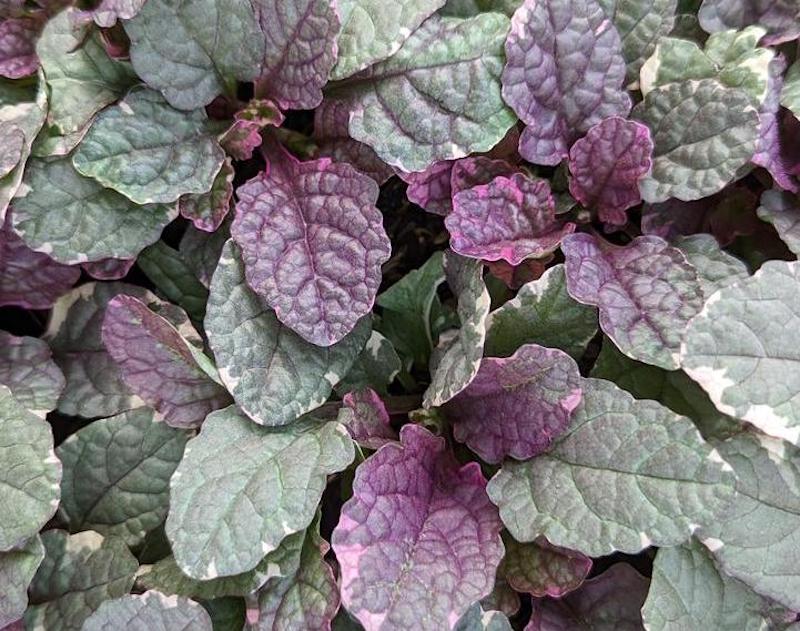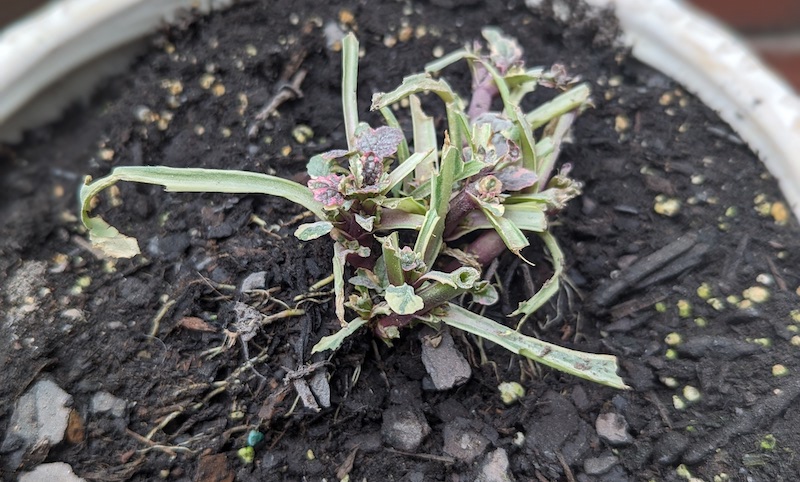Ajuga has lovely spikes of delicate violet blooms above showy purplish-bronze foliage. Due to its unpleasant, almost bitter taste, deer, rabbits, squirrels, and chipmunks typically leave Ajuga alone. Of course, when food is scarce, starved animals sometimes eat what they otherwise wouldn’t. Additionally, different deer populations have different tastes (the deer in my neighborhood, for example, chewed a newly planted Ajuga to the ground). Overall, deer and other critters typically graze this perennial as a last resort.

According to Rutgers University this plant is rarely damaged on their rating scale from Rarely Damaged to Frequently Severely Damaged.
| Rarely Damaged |
| Seldom Severely Damaged |
| Occasionally Severely Damaged |
| Frequently Severely Damaged |
During winter and drought, when food sources are diminished, Ajuga may become more attractive to deer and small animals, including squirrels and rabbits. To protect Ajuga’s foliage during these times, cover it with deer netting or apply a natural deterrent spray containing garlic, spoiled eggs, or soap to keep them at bay. A six-foot deer fence provides the best form of protection, but since deer pose a minimal threat to Ajuga, building a fence may not be worth the time and effort. If rabbits and other smaller animals pose a more significant threat, chicken wire may be a better way to protect Ajuga.

Will Ajuga Come Back After Deer Eat Them?
Ajuga can come back after being eaten by deer; it simply depends on how much damage has been done and how healthy the plant remains. First, examine the damage. Prune any damaged stems. To bolster Ajuga’s overall health, water and fertilize this perennial as soon as its growing season begins again in spring.
Sources: Rutgers New Jersey Agricultural Experiment Station ‘Landscape Plants Rated by Deer Resistance’ 2018
 |
Author Suellen Barnes - Published 11-21-2023 |
